
The Oklahoma City National Memorial is a good example of bad design

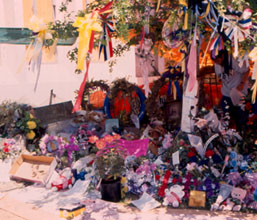
We could have done better
On April 19, 1995, a national tragedy was thrust upon Oklahoma. We acted admirably: we cared for each other and gave what we could to help the rescue and ease the suffering. The world watched. The world was impressed. Then we were faced with the significant task of providing a permanent reminder of the impact of violent terrorism, a legacy to leave for the world. We had an obligation to make an impact on improving society. We did not do well. The Oklahoma City National Memorial is an inappropriate design for the site.
Mistakes that were made

• Gettysburg and Civil War battlefields, opened years later.
• Washington DC: Lincoln's Box at Ford's Theater (outfitted exactly as it was that day) and the apartment house where Lincoln died, opened many years later.
• Honolulu: the USS Arizona Memorial, opened 21 years later.
• Memphis: Martin Luther King's room at the Loraine Motel (outfitted exactly as it was before he stepped out onto the balcony) reopened 25 years later.
• Dallas: the Sixth Floor in the School Book Depository Building reopened in 1989, 26 years after the tragedy.
At the Sixth Floor, the visitor can see exactly where Oswald crouched: the boxes are there that supported his gun, the window is open halfway; the area has been recreated to resemble the way it was in November of 1963. Visitors are able to connect and relate to the tragic event. Imagine going to Dealey Plaza today and finding no Sixth Floor, no School Book Depository, no grassy knoll; but, instead, a nice fountain with different terrain. It might be a pleasant site, but probably not much of an emotional impact.
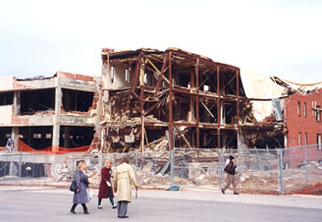
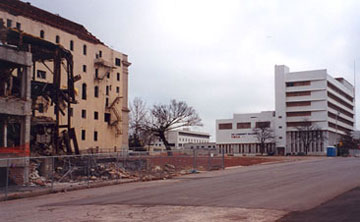
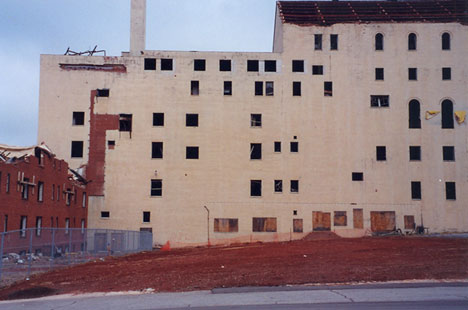
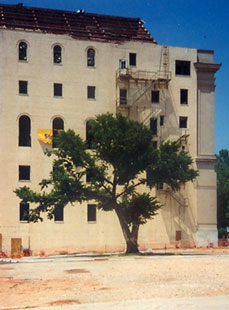

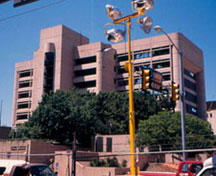
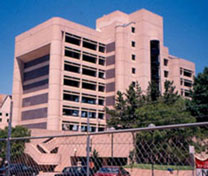
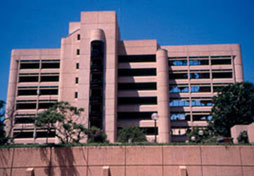
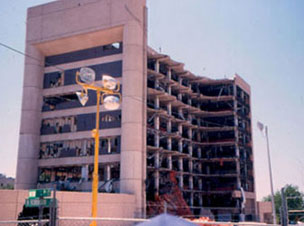
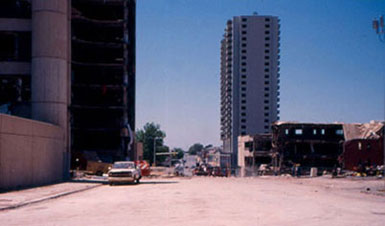
Here's why the design is weak
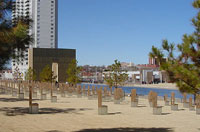
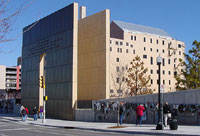
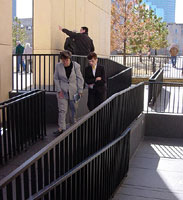
From Metropolis, June 2002: 'The reason so many people have been flocking to see Ground Zero (in lower Manhattan) has to do with frustration with the increasingly mediated nature of contemporary culture. People were sick of watching the towers fall on their television screens - they wanted to see the site with their own eyes. If allowed to, they would have jumped at the chance to touch a piece of twisted metal from the buildings, just to feel it.'
From Ai Awaji, World Affairs Weekly: 'People around the world are coming to the WTC site every day to make a connection between their visual memories and reality.'


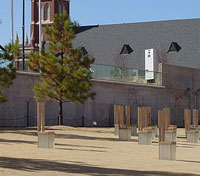
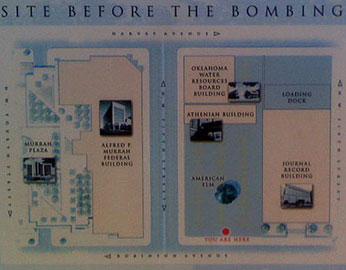

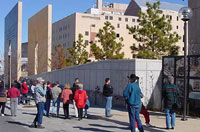

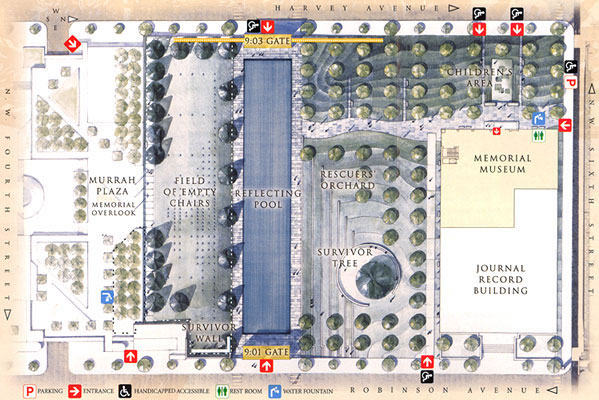

Hiroshima Peace Memorial, commonly called the Atomic Bomb Dome or A-Bomb Dome in Japan, is part of the Hiroshima Peace Memorial Park and serves as a memorial to the people who were killed in the atomic bombing of Hiroshima on August 6, 1945. The first nuclear bomb to be used in war detonated almost directly above the dome. Completed in April 1915, the building was originally scheduled to be demolished, but Hiroshima was rebuilt around the dome. It became a subject of controversy; some locals wanted it torn down, while others wanted to preserve it as a memorial of the bombing. In 1996 the A-bomb Dome was registered on the UNESCO World Heritage List for the Protection of the World Cultural and Natural Heritage.
What should have happened
To develop an appropriate memorial, the memorial design committee should have:
• Temporarily solidified the existing memorial: a weatherproof cover for part of the fence, narrative text, signage, and restroom facilities.
• Accepted the existing memorial and waited for emotions to subside and objectivity to set in.
• Taken the time to adequately develop an appropriate well thought-out historic memorial.
• Determined more appropriate objectives for the design of the memorial: Satisfy the human need to register and connect with a historic emotional event. Create a memorable, serene, and dignified destination for people to pay respects. Respect the personal passion, sacrifice, and emotional impact involved. Educate the visitor about the effects of intolerance, terrorism, and extremism. Honor all citizens involved: victims, survivors, donors, and volunteers. Be sensitive to and balance the needs of victims of the bomb and the 200 million victims of media coverage. Make an emotional impact that will influence the visitor's response to terrorism and violence. Represent clearly Fifth street and the Murrah, Water Resources Board, and Athenium buildings.

What actually happened
Oklahoma City got a beautifully landscaped and well-crafted new urban park but a very poor memorial to a national tragedy. Visitors are putting coins into the trunk of the Survivor Tree and tossing coins into the reflecting pool (even though both activities are prohibited). This seems to show that people need to connect to the site to make it real.
What should happen now
Granted, mistakes were made and the site is currently inappropriate. We should have waited, been more objective, and created more of an impact to show the results of terrorist violence. But we have the memorial as it is and we must now decide what to do that will improve the historic site. Elements could be added to the memorial to enhance its role as a historic site and to increase the impact it can have on visitors.
Elements to add to the memorial
We should now acknowledge that the memorial is a historic sites and we should add elements to emphasize and clarify for the visitor that this had an impact of historic proportions for America.
• Outline all three buildings. The new memorial site should clearly show the foundation footprints of the Athenian, Water Resources Board, and Murrah buildings. This will provide the necessary connection and relevance to the images in people's minds. This is what many people come to see - where was the building?
• Add text and photographs. Large signboards at each significant site could address the historical site with text and pictures of the way the area looked before April 19th and the way it looked after the bombing. Orient the photos so the viewer can relate to the site then and now. Possible locations for text signs: each of the three buildings, the parking lot, where the Ryder truck was parked, where the identifying axle was found, and the YMCA and its alley.
• Move the chain link fence to a more prominent location within the site. Enlarge and possibly erect a covering over the fence.
• Add more pedestrian entrances so that the existing gates become secondary entries.
• Build a connecting ramp or staircase from the Murrah Plaza to the Murrah building site to better integrate the two and create a more cohesive setting. This will also respect the former connection that existed between the plaza and the Murrah building.
Our emotional healing and education about the impact of terrorist violence can be impacted with a more appropriate and better designed memorial that will allow Oklahomans, Americans, and global visitors to be challenged and influenced by this site of historic and emotional significance. A better memorial will show the world that Oklahoma continues to perform admirably and that we will always remember the innocent lives lost and the heroic actions of April, 1995.
Update
Since this essay was published and distributed, these changes have appeared at the site:
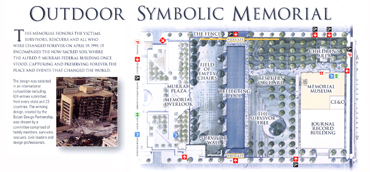
1. The Memorial is now referred to as the Outdoor Symbolic Memorial in literature, promotions, and on-site graphics.
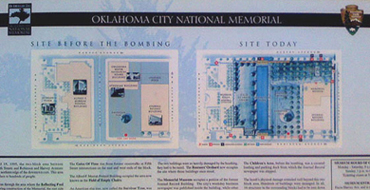
2. Text and photographs have been added that show the locations of the buildings and other elements of the historic site before the bombing.

3. The Oklahoma National Memorial Marathon has been implemented. Promotions for the Memorial Marathon mention a day of fun activities. Granted, before the competition begins they do have 168 seconds of silence to remember the victims. But, it is not very respectful.
Links
Jim Watson's submission to Memorial Design Competition.
Jim Watson's personal account of the bombing.
www.jamesrobertwatson.com/bombingmemorial.html